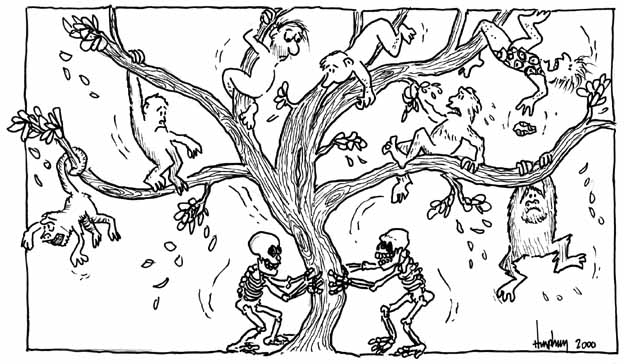South America is a largely forested place, covered by the Amazonian jungles. And I am sure you have heard in the news in recent decades the issues with deforestation for the sake of world and, largely American hungers for produce and alternative fuels. Soy and corn being main crops used for both human and animal feed as well as ethanol fuel additive. It is a repeatedly observable fact that as wild lands are cleared, humans begin to come into contact and conflict wit the natural inhabitants of those lands.
On the heels of Javier’s report of a “Strange Hairy Humanoid,” the Ucumar in Argentina comes announcement across the world of the discovery of potential new member of the Human family. Louis Leaky’s discovery of Homo Habilis, named Lucy at the time of her discovery for the Beatle’s song “Lucy in the Sky With Diamonds” that happened to be playing at the time of her discovery, gave a sort of root to the tree. Between 2007 and 2009, Leaky’s daughter-in-law Maeve led a team that may confirm discovery of a new branch.
From Stuff.co.NZ
A team led by Meave Leakey, daughter-in-law of famed scientist Louis Leakey, found facial bones from one creature and jawbones from two others in Kenya. That led the researchers to conclude that man’s early ancestor had plenty of human-like company from other species.
A skull has been painstakingly pieced together from fragments to reveal relatively long face with larger cranium than Homo Habilis. Now a single skull can be an aberration, look at the variety that exists among modern humans and it is easy to say that this variation could just be the way an individual looked and not a new branch of the family. The recent discoveries confirm that there was a new branch of the family Homo existing alongside one of our early ancestors.
From an article in The New York Times
All in all, the state of hominin affairs that paleoanthropologists are left with is neatly summed up in the title of Dr. Wood’s article, “Facing Up to Complexity.” He concluded with the prediction that “by 2064, 100 years after Leakey and colleagues’ description of H. habilis, researchers will view our current hypotheses about this phase of human evolution as remarkably simplistic.”
Now there is no evidence being suggested that this hominid is still around, but every new discovery of an unknown biped lends even a small opportunity for such a creature to have survived in some remote region of the world. Ourang Pendek, Bigfoot/Yeti/Yerren, Almas all have significant anecdotal evidence for being present with us today and are supported in the fossil record as Homo Florensiensis, Gigantopithecus, and possibly Red Deer Cave people respectively.
Even if these creatures are just some sort of racial memory projecting on modern humans who have lost touch with their primitive nature and origins, at least each new discovery about our past reveals that they existed once and so are worthy of our further investigation, and discovery if they still exist today.
6 comments





